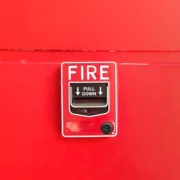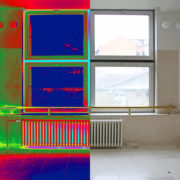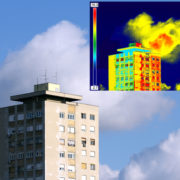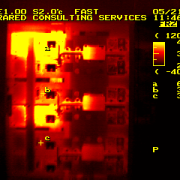Could You Be Facing One of These Common Insulation Problems?
Insulation in a commercial building can sometimes be hit-or-miss. It is typically one of the last things on the list to get replaced if a building is older. However, newer buildings could have much better insulation, depending on when it was built.
There are many insulation problems businesses could have and not even know it. Since you generally don’t see your insulation on a daily basis, a thermography inspection may be required to see exactly how it’s holding up. You may not even know you’re facing one of these common insulation problems.
Aged Insulation
If a property was built more than a decade ago, chances are the insulation isn’t as effective as it could be. Of course, it may not necessarily be bad enough where the cost of replacing it is justified. When you use an IR thermography expert to analyze your insulation, they will be able to tell where the weak spots are and provide an estimate on how much longer it will be effective.
Too Much Insulation
When you have too much insulation, you could be causing some serious health issues for people in your building. Multiple layers of insulation could restrict airflow. Furthermore, if you have any sort of leak in your floors, walls or roof, moisture could pose a problem since it has nowhere to go. Mold and mildew can grow in the insulation and eventually become airborne as well. One of the main benefits of infrared inspection is to detect those holes to keep moisture out as much as possible.
Not Enough Insulation
Not having enough insulation won’t necessarily pose a health risk, but it can hurt the pocketbook. The main downfall of not having enough insulation is energy leaving the building. Your hot air won’t stay inside during the winter and your cool air won’t stay inside during the summer. This causes your HVAC unit to work overtime, which will result in higher energy bills.
Damaged Insulation
Insulation can be damaged by a variety of elements, including rodents and water. Animals try to find a warm place in the winter, so the first place they will look is in and around buildings. If they find an opening, they could damage your insulation quickly by making their nest in it.
A roof leak is also a main cause of damaged insulation. If you haven’t gotten a thermography inspection on your roof in a while, now is the time to do it. Once water gets into your insulation, it needs to be replaced as soon as possible.
Contaminated Insulation
Animals are generally the culprits when it comes to contaminated insulation. Their urine and droppings can create some bad smells in the house and can reduce the effectiveness of the insulation drastically.
Infrared Consulting Services is here to help provide IR thermography inspections for commercial buildings. To learn more about the benefits of infrared inspection, or to set up an appointment, be sure to contact us.









 By detecting problems before they occur and by pin-pointing exactly where problems might exist, Infrared Thermographic Testing has many benefits.
By detecting problems before they occur and by pin-pointing exactly where problems might exist, Infrared Thermographic Testing has many benefits.
 Learn more about our wide range of non-invasive, non-destructive inspection & testing services and if they are right for your needs.
Learn more about our wide range of non-invasive, non-destructive inspection & testing services and if they are right for your needs.
 Founded in 1988, Infrared Consulting Services (ICS) provides professional infrared electrical, NDT and building envelope inspection services nationwide.
Founded in 1988, Infrared Consulting Services (ICS) provides professional infrared electrical, NDT and building envelope inspection services nationwide.